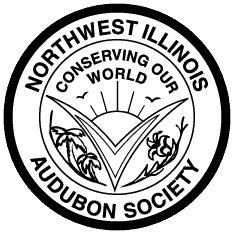Native Plants Benefit Everyone
Enhance your landscape for birds, other wildlife and people with native plants.
Native Plants Benefit Birds and Other Wildlife
To attract birds to your home and yard, our Chapter encourages the use of native plants. Bird-friendly landscapes provide food and shelter for native birds and other wildlife. Native insects co-evolved with native plants, which ultimately provides food for native birds. The majority of bird species in North America rely on insects to feed their young during breeding season. Many plant species act as host plants for certain species of butterflies to lay their eggs, which ultimately become larvae and potential food for birds, such as Eastern Bluebirds and Black-capped Chickadees.
Native plant species provide nectar for important pollinators in the ecosystem, such as bees, wasps, butterflies, and moths. Without pollination, flowers and fruits will not be produced and reproduction of the plant declines. Plants that produce berries will attract fruit-eating and omnivorous bird species, such as Cedar Waxwings, Rose-breasted Grosbeaks, and American Robins. In addition, native trees and flowers that produce nuts or seeds can feed birds, such as American Goldfinches, Blue Jays, and woodpeckers into the cooler season as well as throughout the winter.
Native plants provide shelter and nesting sites for birds that breed in our area. In addition, parts of herbaceous plants can provide nesting material for birds. Dead trees can provide habitat for cavity nesters and the dead stems of herbaceous plants provide habitat for cavity-nesting bees and other insects that seek shelter to survive the winter.
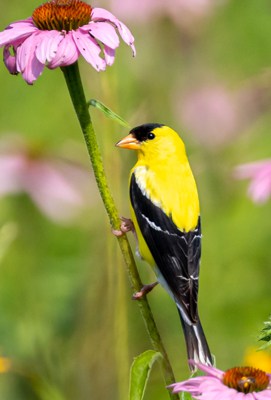
Here are some examples of gardens established by NIAS members.


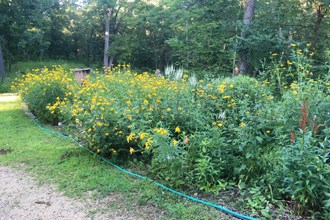

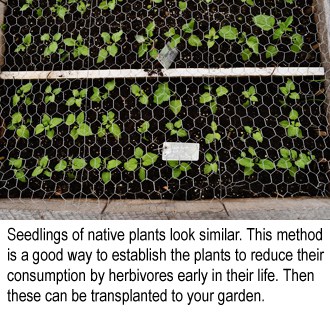
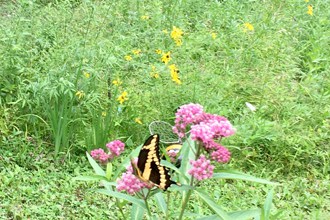
Native Plants Benefit People
Replacing turf grass with native plants reduces the need for mowing, thus reducing the air, water, and noise pollution that is emitted from lawn mowers. It also saves time and money.
Native plants have adaptations that allow them to survive in their native region. They require almost no maintenance and do well without pesticides or fertilizers compared to non-native and ornamental plants that are not adapted to our area. Native plants often have deep root systems that allow them to survive drought conditions and can also grow in poor soil conditions. They can also reduce flooding in areas and minimize the impact of large amounts of water overwhelming municipal storm drains and sewers.
Native plants have the ability to sequester carbon from our atmosphere due to the amount of biomass the plants produce above and below-ground. Compared to conventional lawns, native plants have great ability to reduce the effects of climate change, which ultimately benefits all life on the planet.
Native plants increase the biodiversity of your home landscaping, attracting a variety of wildlife to your home. You will gain greater appreciation for the amazing adaptations of plants and wildlife and enjoy the knowledge gained while watching your garden grow!
Getting Started With Native Plants
To get started with native plants, our Chapter members Dan and Sarah Barron have provided an excellent resource that includes information about preparing your sites, choosing the correct species for the area and soil types, and methods of planting. You can find this resource here.
In addition, our Chapter has provided information about native shrubs and trees.
The National Audubon Society provides an online Native Plants Database that can be personalized to your zip code.
Other Resources and Websites
Homegrown National Park is a grassroots call-to-action to restore biodiversity and ecosystem function by planting native plants and creating new ecological networks.
National Wildlife Federation provides information about how native plants are beneficial in the ecosystem and also provides a native plant finder.
Wild Ones® is a national non-profit organization with local chapters that promote the many benefits of landscaping using native plants – wildflowers, shrubs, trees, and grasses.
